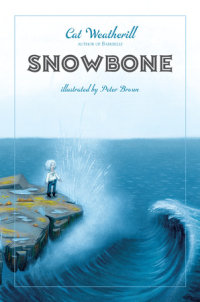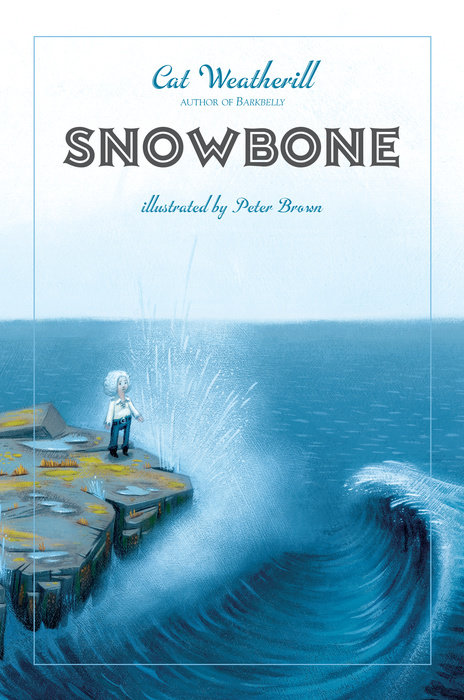Chapter 1
The galleon sailed through the afternoon, alone on the butterfly-blue ocean. Only she wasn’t alone. Not anymore. Because the strange ship that had been following her for days, lying low on the horizon like a great, gray wolf, was coming closer.
“PIRATES!” The lookout shouted so loudly, his teeth rattled. “PIRATES! PORTSIDE! GAINING FAST!”
The first mate stormed to the quarterdeck, knocking sailors down like bowling pins. “Cap’n?” he said breathlessly. “What’ll it be?”
Captain Kempe, gazing through his telescope, seemed unconcerned by the turn of events. While his crew crumbled around him, he stood firm. Calm, unruffled, handsome as ever. But cold, cold fear had gripped him. He could feel it turning in his belly like a living thing.
“Cap’n?” The first mate watched a tiny muscle, tick-tick-ticking on the captain’s neck.
Captain Kempe gazed on. The pirate ship was a brig. They couldn’t outrace her. But they could try.
He snapped the telescope shut. “Let’s show them what we’re made of,” he said. “All the speed we can muster, Flynn, straight away.”
“Aye, aye, Cap’n.”
“And, Flynn, prepare the cannons.
Chapter 1
The galleon sailed through the afternoon, alone on the butterfly-blue ocean. Only she wasn’t alone. Not anymore. Because the strange ship that had been following her for days, lying low on the horizon like a great, gray wolf, was coming closer.
“PIRATES!” The lookout shouted so loudly, his teeth rattled. “PIRATES! PORTSIDE! GAINING FAST!”
The first mate stormed to the quarterdeck, knocking sailors down like bowling pins. “Cap’n?” he said breathlessly. “What’ll it be?”
Captain Kempe, gazing through his telescope, seemed unconcerned by the turn of events. While his crew crumbled around him, he stood firm. Calm, unruffled, handsome as ever. But cold, cold fear had gripped him. He could feel it turning in his belly like a living thing.
“Cap’n?” The first mate watched a tiny muscle, tick-tick-ticking on the captain’s neck.
Captain Kempe gazed on. The pirate ship was a brig. They couldn’t outrace her. But they could try.
He snapped the telescope shut. “Let’s show them what we’re made of,” he said. “All the speed we can muster, Flynn, straight away.”
“Aye, aye, Cap’n.”
“And, Flynn, prepare the cannons. Just in case.”
“Aye, sir,” said Flynn, with the ghost of a smile. Both men knew the Hope was doomed.
Captain Kempe turned back to the ocean. The pirate ship was speeding toward them, riding the waves like a storm demon. With a sigh, he stroked the sword that hung, cold and deadly, from his belt.
He reopened his telescope. The ship was nearly upon them. So close, he could see the pirate flag, black silk fluttering in the ocean breeze, and the pirates, calmly going about their business. How different from his own men, with their wide eyes and praying mouths, running backwards and forwards, pale with panic, pulling, heaving, positioning the cannons, trying to believe that firepower alone would save them.
BOOOOM! The pirate ship opened fire. The Hope lurched violently as the first cannonball struck her.
“Return fire!” yelled the captain.
BOOOOM! The Hope replied with a thunderous volley. The pirate ship reeled under its impact and Captain Kempe punched the air triumphantly. Down below, in a fug of smoke and sweat and powder, his men raced to prepare a second round.
But the crew of the pirate ship, the Mermaid, was doing exactly the same. And there, in the dark and the dust, they heaved a massive cannonball into place and—tsss!—torched the powder and—BOOOOM!—the cannonball was spat from the gunport. It tore through the air, racing its own shadow across the waves, faster, faster, faster. A death-bringing, wood-smashing, hope-crushing globe of destruction. Faster, faster, faster. CRAOWOOPOOOM!
The mighty cannonball smashed through the Hope’s hull planks and careered into the hold. Here there were crates, dozens of them, full of wooden eggs. Crrooom! Half were smashed to smithereens; the eggs tumbled out onto the floor. A flickering lantern, swinging from a roof beam, fell from its hook and—vooomf!—the flame ignited the spilled oil and a fire began.
It spat and clawed like a flaming tomcat. It pounced on the shattered crates. Mauled the decking. Snapped the bones of the ship. It hissed and growled. Whipped an angry, fiery tail till the hold fizzed with sparks. Then it crept forward on its belly and started licking at the remaining crates.
Inside those crates, a strange thing happened. As the temperature rose, the wooden eggs started to move. They twisted and turned, this way and that, and suddenly—bang!—one of the crates exploded. The eggs were thrown high into the air, and fell back down like apples in a windstorm. And one pale egg, whiter than all the others, rolled away into a quiet corner and lay there, quite still.
But deep inside that egg, things were beginning to change. Cells were dividing, multiplying, replicating. Limbs were forming, straining, pushing. The egg was swelling, bigger, bigger. The wooden shell became leathery, taut. It bulged as a foot pressed here, a nose poked there. Whatever was inside wanted to get out and nothing was going to stop it.
Oof! Out came a leg. A pale wooden leg, with tiny toes. Oof! Another, kicking hard. Ug! An arm. Ug! Another. Fine wooden fingers, feeling, feeling. The baby rocked from side to side, trying to right herself. BOOM! Another cannonball screamed into the hold and toppled a tower of crates. They fell so hard, the baby was bounced into the air—wheeeeeeee!—and landed on all fours like a headless cat. Her hands reached for the empty space between her shoulders. She took hold of her hair and pulled—but her head wouldn’t come out. She pulled again, harder now, and—pop!—out it came. It wobbled on her neck like a loose button. And there she sat, bare-bottom naked, goose-gray eyes blinking. A strange, pale wooden baby with just one thing on her mind.

